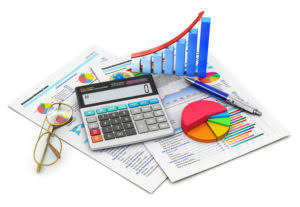Goodwill Accounting: What It Is, How It Works, How To Calculate
If there is a change in value, that amount decreases the goodwill account on the balance sheet and is recognized as a loss on the income statement. After all, when reading a company’s balance sheet, it can be very difficult to tell whether the goodwill it claims to hold is in fact justified. For example, a company might claim that its goodwill is based on the brand recognition and customer loyalty of the company it acquired. Shown on the balance sheet, goodwill is an intangible asset that is created when one company acquires another company for a price greater than its net asset value. Unlike other assets that have a discernible useful life, goodwill is not amortized or depreciated but is instead periodically tested for goodwill impairment. If the goodwill is thought to be impaired, the value of goodwill must be written off, reducing the company’s earnings.

Even so, the amount of goodwill is subject to an impairment test at least every twelve months. Goodwill – an intangible asset – is the value of a business’ brand name, good customer relations, extensive customer base, excellent employee relations, and any proprietary technology or patents. Goodwill represents a certain value (and potential competitive advantage) that may be obtained by one company when it purchases another. It is that amount of the purchase price over and above the amount of the fair market value of the target company’s assets minus its liabilities. The impairment expense is calculated as the difference between the current market value and the purchase price of the intangible asset. Goodwill appears on the balance sheet as an intangible asset and is subject to periodic impairment tests, impacting the company’s overall valuation.
The Words of the Week – Mar. 29
Start with a free account to explore 20+ always-free courses and hundreds of finance templates and cheat sheets. Give that its components have subjective values, there is a considerable risk that a predatory company might overvalue goodwill in an acquisition. When a company is being acquired by another one for a premium value, that amount, above what it is believed to be truly worth – its book value – is known as goodwill. Goodwill is a vital component for increasing a company’s customer base and retaining existing clients.
Transactions involving goodwill may have a substantial amount of risk that the acquiring company could overvalue the goodwill in the acquisition and ultimately pay too much for the entity being acquired. For the stockholders of the acquiring company, this overvaluation would be very bad news, because they would probably see their share values decline https://www.bookstime.com/ when the company later needs to write down the intangible asset. For an actual example, consider the T-Mobile and Sprint merger announced in early 2018. The deal was valued at $35.85 billion as of March 31, 2018, per an S-4 filing. The fair value of the assets was $78.34 billion and the fair value of the liabilities was $45.56 billion.
Supercharge your skills with Premium Templates
The concept of goodwill comes into play when a company looking to acquire another company is willing to pay a price premium over the fair market value of the company’s net assets. The process for calculating goodwill is fairly straightforward define goodwill in principle but can be quite complex in practice. To determine goodwill with a simple formula, take the purchase price of a company and subtract the net fair market value of identifiable assets and liabilities.
This type is related to the company, its position in the marketplace, and how well it serves its customers. The task of maintaining goodwill and mutual understanding between a company, its customers and the rest of the general public is usually undertaken by the Public Relations or Marketing department. Negative goodwill is usually seen in distressed sales and is recorded as income on the acquirer’s income statement. Google’s brand, synonymous with internet search and innovation, is a key factor in the company’s goodwill. Understanding goodwill is pivotal for developers navigating financial landscapes.
goodwill noun
Under the second method of measuring the NCI, we take into account the 10% of B that A didn’t acquire. As a result, the goodwill value is $24 million ($150m + [140m x 0.1] – $140m). Thus, there is a difference of $2 million between the amount of the goodwill calculated under the two methods. It is the vague and somewhat subjective excess value of a commercial enterprise or asset over its net worth.
- Companies assess whether an impairment exists by performing an impairment test on an intangible asset.
- Goodwill can be challenging to determine its price because it is composed of subjective values.
- Thus, there is a difference of $2 million between the amount of the goodwill calculated under the two methods.
- In a non-business context, goodwill refers to a kind and benevolent attitude one holds or displays towards others, often characterized by helpfulness and a desire for others’ happiness and well-being.
- The task of maintaining goodwill and mutual understanding between a company, its customers and the rest of the general public is usually undertaken by the Public Relations or Marketing department.
- Next, calculate the Excess Purchase Price by taking the difference between the actual purchase price paid to acquire the target company and the Net Book Value of the company’s assets (assets minus liabilities).
- In some cases, the opposite can also occur, with investors believing that the true value of a company’s goodwill is greater than that stated on its balance sheet.


